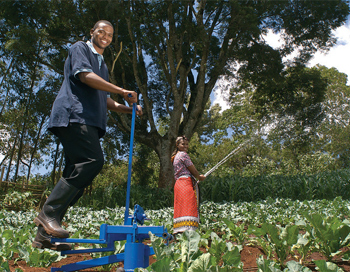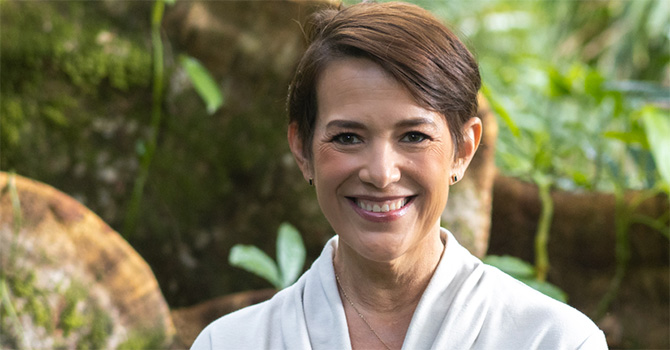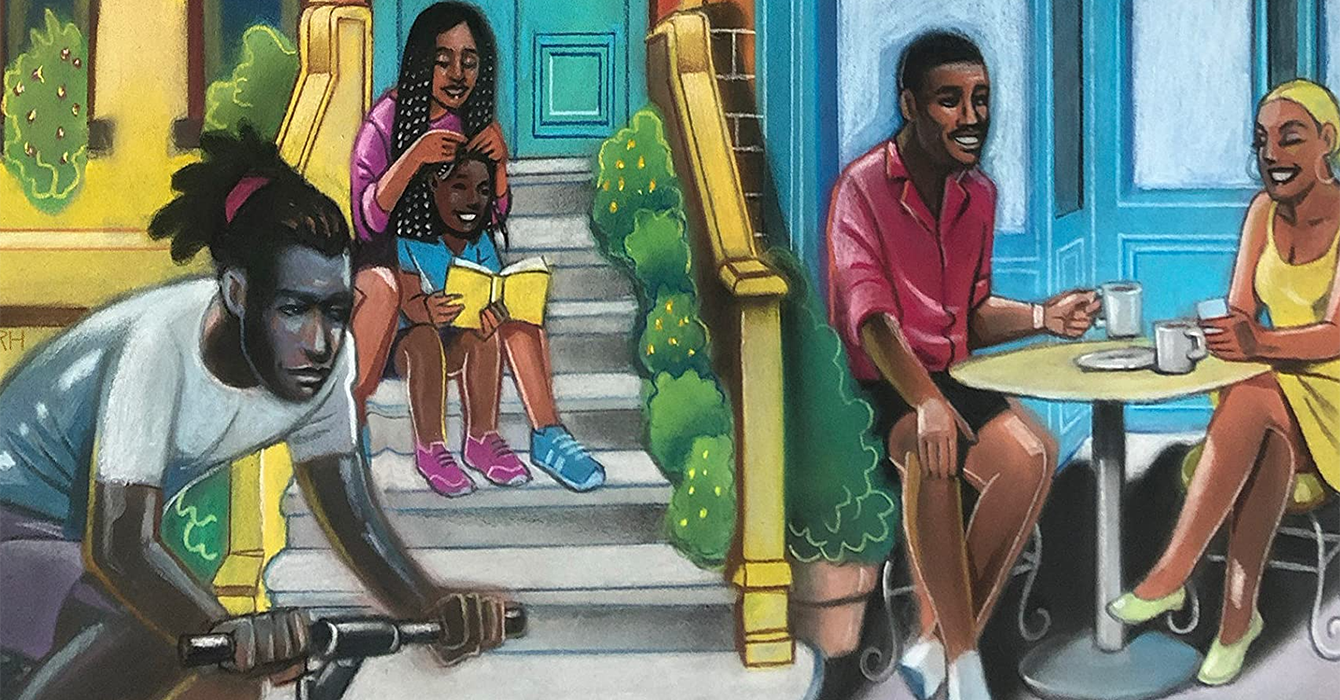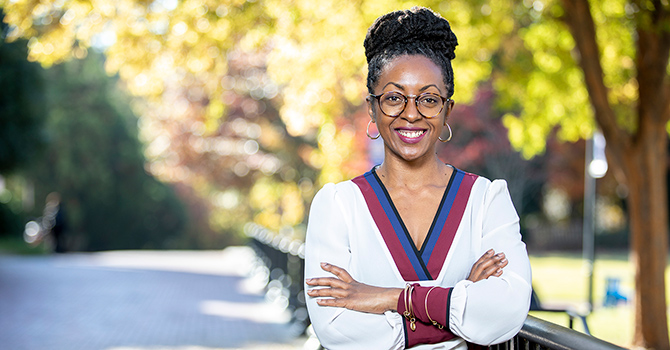In the 1980s, Martin Fisher spent years doing traditional anti-poverty work in Africa, only to see a string of community-development projects flounder and fail. Finally, he had a flash of insight that would prompt him to create a very different kind of nonprofit, KickStart.
“I learned a lot of ways not to do development and came to this realization that the poor person’s No. 1 need is a way to make more money,” he said.
 Launched in 1991, KickStart identifies profitable businesses that people can start with a small investment and then creates and sells the tools and equipment that people need to enter those businesses. As a result, more than 130,000 profitable new businesses have been started throughout Africa, more than 65,000 acres of farmland are being irrigated by KickStart pumps, and about 650,000 people have been lifted out of poverty.
Launched in 1991, KickStart identifies profitable businesses that people can start with a small investment and then creates and sells the tools and equipment that people need to enter those businesses. As a result, more than 130,000 profitable new businesses have been started throughout Africa, more than 65,000 acres of farmland are being irrigated by KickStart pumps, and about 650,000 people have been lifted out of poverty.
“We’ve seen this again and again,” Fisher said. “This puts families on a different trajectory out of poverty. What we’re really trying to do is build an entrepreneurial middle class in Africa.”
In April 2012, KickStart received the 2012 Enterprising Social Innovation Award given by The Center for the Advancement of Social Entrepreneurship (CASE) at Duke University’s Fuqua School of Business. While at Duke to receive the award, Fisher spoke with Faith & Leadership about KickStart, engineering and a more entrepreneurial approach to community development. The following is an edited transcript.
Q: What is KickStart?
KickStart is a nonprofit social enterprise with a mission to take millions of people out of poverty, especially in Africa. And by “out of poverty,” we mean enabling them to earn a lot more money.
When you’re poor, anywhere in the world, your No. 1 need is to increase your income and find a way to make more money.
The poor everywhere live in a cash economy. They need money to buy food, clothes, housing and everything else. If they can make a lot more money, they won’t be poor, and they can afford all these things. If they don’t, they will continue to be poor.
Q: That sounds obvious, but it’s not -- people are poor because they don’t have enough money. Tell us more about that and the significance of living in a cash economy.
The interesting thing is that, in Africa, they didn’t used to live in a cash economy. Not many generations ago, you could get by with virtually no cash. You could hunt or take the cattle out to pasture or gather honey. You could grow enough food to stay alive. You didn’t need much cash.
But all that has changed. Now they’re completely thrown into a cash economy. They need money for everything. If they have enough money, they can get out of poverty. If they don’t, they can’t.
Everybody makes at least a small amount of money. If they didn’t, they couldn’t live. They make some money, but not enough to get out of poverty. They make enough to survive. Why is that?
If you look at what they do for a living, most poor people in the world are farmers. In Africa, 80 percent of the poor are farmers. They all wait for the rain. They all plant pretty much the same crop. They all harvest at the same time, and they all try to sell into the same market.
Who do you sell to? You can’t sell to your neighbor, because he’s also a farmer. So you wait for the middleman to buy your crop.
But when he or she comes, everybody has the same crop. The market is flooded, and you get very little money. And anywhere from 20 to 50 percent of the harvest goes bad before you can sell it or eat it. Then, three or four months later, everybody’s hungry, because there are no crops. They call it “the long hungry season.”
So you need other ways to make money, but there are no jobs. In Kenya, the private sector employs only about 6.5 percent of the labor force, and the government, a similar number. In Tanzania, it’s only about 3.5 percent.
Everybody else is in the informal sector, which means they’re self-employed. Most do petty trade, where they sit on the roadside and buy and sell the same few products. Or they do metal work, carpentry, tailoring, food preparation and three or four other types of small business where they’re all competing with each other and not making enough money to get out of poverty.
Q: What does KickStart bring to this?
We do two things: identify profitable businesses that people can start with a small investment; and develop, design and produce the tools and equipment they need for those businesses and then sell them to these very poor but very entrepreneurial people.
And they are entrepreneurial. They’ve proven they’re entrepreneurial. They’ve already started businesses, just the wrong businesses.
We started with human-powered machines for manufacturing. We have a machine for making low-cost building blocks out of soil and cement. A small farmer in western Kenya, for example, bought one and ended up with four machines and has 45 employees today. He’s a wealthy businessman and owns a shopping mall in Nairobi. We’ve sold thousands of these machines, and hundreds of thousands of buildings across Africa have been built using these blocks.
We have a machine for making cooking oil out of sunflower seed. We have a machine for baling hay, which is in great demand during the dry season.
We started with human-powered machines like these and others, but these are all fairly complex businesses that require working capital. So we asked, “What kind of business could the average poor African start?”
Because most are farmers, the best thing they can do is to move from rain-fed agriculture to irrigated agriculture. With irrigation, you can grow higher-value crops and get higher yields. More importantly, you can get three or four crops per year, even during the dry season, when prices go up by a factor of 10 or 20, and you can make a huge amount of money.
There’s almost no irrigation in Africa. Less than 4 percent of the farmland in sub-Saharan Africa is irrigated, compared to about 43 percent in Asia. So there’s huge potential, but very few technologies are available.
A petrol-powered pump is expensive, hard to maintain and hard to get fuel for. There’s no electricity in rural areas, and solar pumps are too expensive.
So we created a line of human-powered irrigation pumps. Our best-selling pump, the Super MoneyMaker Pump, is like a StairMaster. You step back and forth and it pulls water up out of a well and pushes it through a hose into a field. You can irrigate two acres of land with a couple hours in the morning and a couple hours in the evening.
Q: How did you come to this approach to development work?
In 1984, I found myself in a physics lab at Stanford doing a Ph.D. in mechanical engineering. I realized I had educated myself into a corner, and the only jobs I could get were teaching at a university, working for big oil or doing military research. Being young and idealistic, none of that sounded exciting.
I went to Peru and came face to face with rural poverty for the first time. After I came home, I thought maybe I could do something with poverty and technology. I applied for a Fulbright fellowship and was lucky enough to get one.
I went to Kenya for 10 months and stayed for 17 years. The first five or six years I spent learning how not to do development. I worked with an organization that was doing “integrated community development,” where we would pour a lot of money into one community.
I established a rural water program. We’d go in and dig wells, install pumps and build a dam. I also built a couple of rural workshops, where we made farm equipment that we gave away to farmers. I worked with youth groups and women’s groups getting them set up in small businesses.
All that sounds good. It’s what development has typically done, but it’s unsustainable. You go into the community, dig a well, organize a committee to look after the well, and then walk away; and everything’s fine until four years later, when the pump breaks.
By that time, the committee no longer exists, and nobody’s going to fix the pump. It’s the tragedy of the commons -- if everyone owns something, then in reality no one owns it. As a result, these pumps are left broken, and the only thing anybody remembers is, “That NGO brought it. Let’s wait and see if they come back.” Africa is loaded with an estimated 100,000 broken-down water projects, but we continue doing it.
Giving away farm equipment never worked either, because it wasn’t what the farmers wanted. They didn’t have any skin in the game, so they didn’t appreciate it. Worse, we put out of business the guy down the road who was trying to produce and sell farm equipment commercially.
As long as we held their hands, gave a lot of handouts, they could do the business and make it uncompetitive for the entrepreneur down the road. But when we let go, the whole thing fell apart.
So I learned a lot of ways not to do development and came to this realization that the poor person’s No. 1 need is a way to make more money.
Q: What’s been the impact of KickStart?
We’ve helped create over 130,000 profitable new businesses. Between 65,000 and 70,000 acres of farmland are under irrigation by our pumps. And about 650,000 people have been lifted out of poverty as a result. They’re growing fruits and vegetables that are feeding about 10 million people, and 1,700 to 1,800 new farm businesses are being created every month by families who are buying these pumps.
For every dollar that we spend of donor funds, these families make $12 in profits and wages in the first four years. And that dollar covers all our costs -- the R&D, the impact monitoring, everything.
Q: All your products are designed using technology that fits a particular place. How do you design these products?
A pump has to be easy to install and maintain. These farmers don’t own a screwdriver, a hammer or a wrench. So our pumps are designed so you can take them apart with your hands and put them back together.
They have to be extremely energy efficient, because you’ve only got human power, and they have to be very rugged. We produce them in factories, initially in Africa, but now in China, where it is cheaper.
Then we import them from China and distribute them through a network of about 450 local retail shops that we sell the pumps to, and they sell to the farmers. These shops sell feed, fertilizer, pesticides, and now they’re also selling the pump. It’s the most expensive thing they’ve ever sold.
Q: How did you make the connection between engineering and anti-poverty work?
Well, if you’re a hammer, everything is a nail. But when you look at the economics and you realize the power of technology to create or transform a business, you do realize the importance of technology.
When you’re introducing a new piece of equipment that people have never seen before and never even dreamed about, you have to introduce a Mercedes. It has to be well-engineered. It can’t break down. It has to be solid and reliable, because a piece of technology can get a bad name very quickly. If it doesn’t work, it can kill the market.
These pumps have to be indestructible and produce the results that we say they produce. That’s why we spent so long designing them.
Actually, that’s the easy part. Being an engineer, I used to believe that if we designed the best pump in the world, then people will buy it. But convincing someone to change what they buy is by far the hardest part, especially the customers we’re dealing with -- the very, very poorest.
They’re the most risk-averse customers in the world, and they have no access to credit, no savings and no infrastructure. And we’re telling them to buy a piece of equipment that they’ve never seen before: “It’s expensive, but buy it and it will change your life.”
Q: How do you address that?
We do huge marketing campaigns. We do an advertising campaign, “Farming is my business,” with big promotions. We’re not selling a piece of equipment but a better life. We have live demonstrations at the retail shops and on people’s farms, because people have to see it to believe it.
Any new technology takes a long time before it takes off. If you’re selling a product to wealthy people, you can cover your early costs. But if you’re selling to poor people, your margin has to be very low, and you are not going to cover these costs.
This is why we need philanthropy, because the private sector won’t go into this market. We use donor funds to fund this initial 10-15 years of creating the market demand for a new product. And for every $300 in donor funds we use, we can take one family out of poverty.
That means they are no longer worried about survival. They have some money left over to invest in the future. They’re going to expand the farm, buy a dairy cow, get poultry. They’re going to build a new house and send their kids off to secondary school or college.
We’ve seen this again and again. This puts families on a different trajectory out of poverty. What we’re really trying to do is build an entrepreneurial middle class in Africa.






